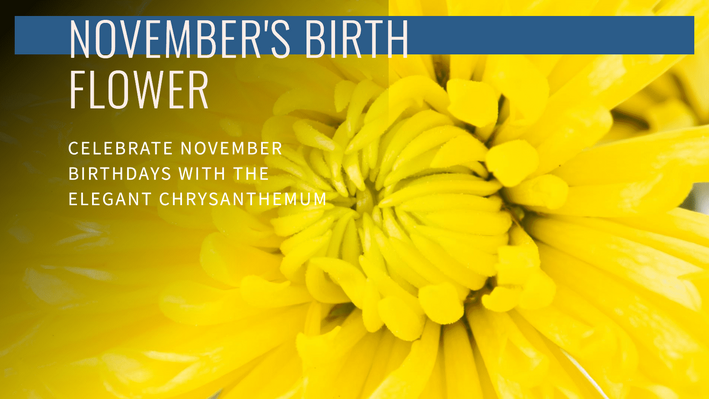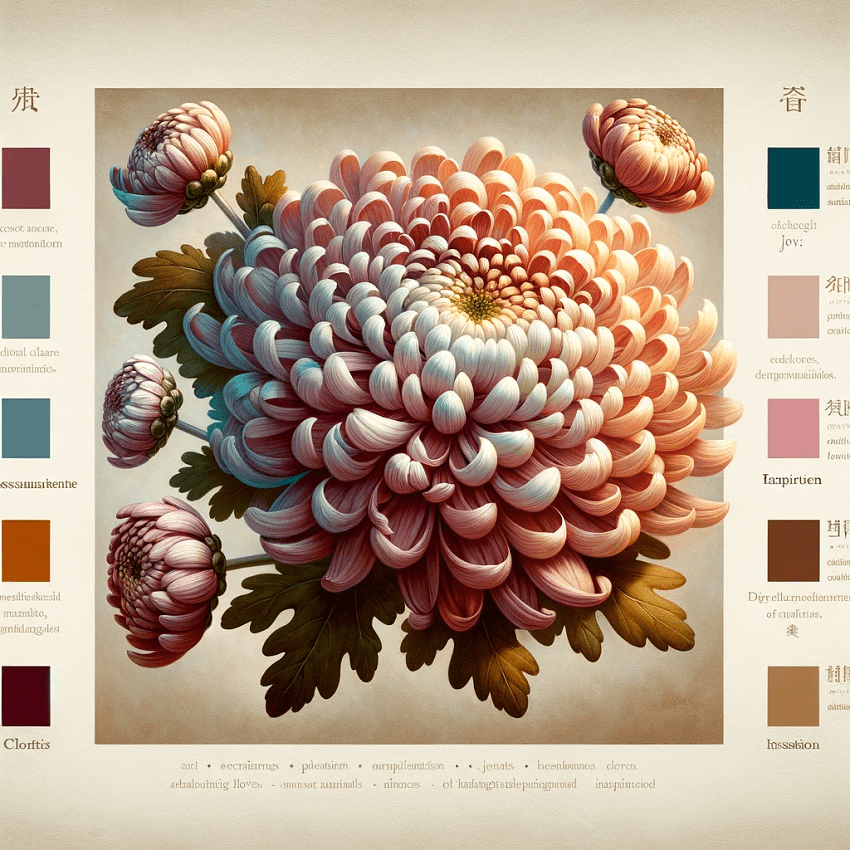Same Day Flowers Delivery - Australia Wide!
November Birth Flower

November Birth Flower
Get to Know: Chrysanthemums
The florist-favourite Chrysanthemum is November’s Birth Month Flower. Let’s get to know this interesting blossom further and discover what’s more to love about this popular flower.
Key Points:
- The Chrysanthemum, November's birth flower, originated in China and was valued for its supposed healing properties. It later spread to Japan and the New World.
- A Chrysanthemum is not a single flower but a cluster of hundreds of florets. Modern Chrysanthemums, bred and manipulated, differ greatly from their ancient counterparts.
- Symbolically, Chrysanthemums represent joy, optimism, and cheerfulness. They're often sent to convey good luck, good health, or positivity.
- Colour variations of the flower signify different meanings, such as secret love, innocence, inspiration, and even fragility of relationship.
- Chrysanthemums are also associated with certain personal traits such as compassion and hard-working nature, especially for those born in November.
- In addition to their symbolic and medicinal value, Chrysanthemums are easy to grow and are known to help in absorbing indoor toxins and pollutants.
First Cultivation
First planted in China as a flowering herb, the chrysanthemum was believed to have healing properties. The roots were boiled and used as treatment for headache while the petals and young sprouts were used as salad ingredient.
During the Nara Period, the chrysanthemum flower found its way to Japan and mesmerised them enough for the Japanese to include a stylized 16-floret chrysanthemum variety in the Emperor’s official seal. Called “Ichimonjiginu,” this chrysanthemum form is used as a crest by members of the imperial family. So loved by the Japanese, they also dedicated a day specially for the chrysanthemum flower and called their National Chrysanthemum Day as the Festival of Happiness.
For more birth flowers articles click here.

By 17th century, chrysanthemum was introduced into the New World. The English name “chrysanthemum” stemmed from the Greek word chrysos which means gold and anthemom which means flower. Such name was given for this flower because of the yellow, daisy-like appearance of this bloom in early illustrations.
Classification
A chrysanthemum is actually not a single flower but a floral head with hundreds of flowers or florets. Today’s chrysanthemums are very different from ancient mums. Modern chrysanthemums are more showy and look less like daisies. Although they belong to the Compositae/Asteraceae or daisy family, mums today are no longer as simple as typical daisies. Given breeding, mutation, and some botanical manipulation, we now have a highly evolved chrysanthemum that requires a 13-part classification system to differentiate one variety from the other.
Symbolism
The chrysanthemum is a flower loved by florists, flower growers, gardeners and DIY flower-arranging enthusiasts. Why? It’s because they are available in so many different varieties, in practically every colour. They have a long vase life, are affordable, and quite meaningful.
In the traditional language of flowers, chrysanthemums generally mean joy, optimism or cheerfulness. It’s the flower sent to wish someone good luck, good health, or positivity. Chrysanthemums, in general, are the flowers to send to congratulate someone or to send encouragement and good vibes.
In Australia, chrysanthemums are considered the official Mother’s Day flower (because “Mums”). For the Chinese, chrysanthemums signify long life, wealth, and rebirth making them great flower gifts to celebrate birthdays and the arrival of a new family member.
When we consider each mum’s colour, it can communicate many things including secret love (red mums), tainted love (yellow mums), delicate love (orange mums), innocence and sincerity (white mums), inspiration or moving on (blue mums), health and vitality (green mums) or fragility of relationship (pink mums).
The symbolic meaning will largely depend on the floral design, the overall floral composition of an arrangement, and human culture. You can send a bouquet filled entirely with pinkish-purple chrysanthemums to wish someone well. Choose mums in a deep and rich shade of pink to celebrate friendship or to express gratitude. In Asian and certain European countries, white mums often symbolise grief or mourning. In the United States, chrysanthemums are generally regarded as a positive flower except in New Orleans. In Feng Shui, homes with real or paintings of chrysanthemums inside are said to be filled with laughter and happiness.
November Birth Flower
A birth month flower is said to have a sort of influence on someone’s personality. If you are born in the month of November, your birth flower is chrysanthemum and somewhere in you reflects the characteristics of this wonderful blossom.
Chrysanthemums convey compassion and cheerfulness. This blossom is seen as a beautiful, clever, hard-working and multi-tasking flower.
Fun Facts
- Chrysanthemums go with two nicknames: mums and chrysanths
- There are 40 wild species of chrysanthemums
- Mums come in various forms: daisy-like, pompoms/button-like, decorative
- There’s more than a rainbow of mums available – dark lavender, peachy-coral, reddish-purple, two-tone yellows, and even true blue
- Chrysanthemum petals can be used as medicinal tea to aid in liver cleansing and as a stimulant when recovering from illness.
- Mums can help naturally repel most bugs because it contains a chemical called pyrenthrum
- This all-around flower is also good at absorbing toxins and pollutants indoors. Mums are particularly good at absorbing benzene and formaldehyde from the air.
- The chrysanthemum is also the flower to celebrate 13th wedding anniversaries
